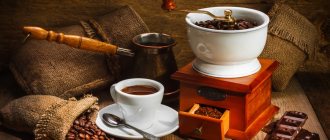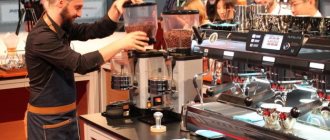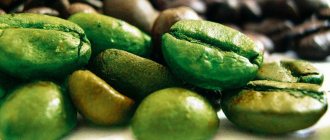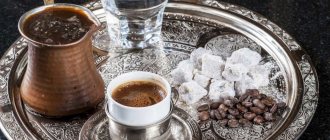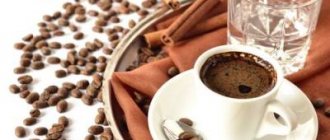Manufacturing conditions
In order to properly prepare cappuccino in a coffee machine, you should pay attention to some subtleties. The most important thing is: the choice of a dairy product and the correct selection of dishes in which coffee will be served. The easiest way to make the drink is in a coffee machine with an automatic cappuccino maker.
Characteristics of milk for cappuccino
There are some requirements for this ingredient:
- Fat content. If you use a low-fat product, a milk cap will not form. Fat content must be at least 3.5%.
- The composition of the protein, which determines how dense and soft the foam will be. The required consistency is obtained with a protein content of about 2.8-3.5. Only high-protein milk will create a cap of large, dry bubbles that create visible airiness.
- Initial temperature. The milk must be cold (3-5° C). The temperature of the whipped product should not exceed 75°, otherwise the taste of boiled milk will appear.
You cannot use low-protein, expired milk or dry powdered product to make a coffee drink.
Dishes
To make a real cappuccino, you need to choose the right glassware. Before cooking you need to pay attention to the following points:
- The dishes should be heated to approximately 40°C;
- The appearance of moisture on the container and in the pitcher is unacceptable;
- To serve, use transparent glass or ceramic cups and glasses.
Correct use of the cappuccino maker
The procedure for preparing a coffee drink in a coffee machine depends on the model of the cappuccino maker. With automatic mode, just place the container with milk in the unit and select the correct mode. The foam will flow into the espresso container on its own.
For you:
American coffee: choice of beans, grinding, technology
Making cappuccino in a simple coffee machine is a little more complicated, since it uses a manual cappuccino maker.
- The unit should be preheated for 30 minutes, releasing steam from the steam wand in advance.
- Pour milk into the bowl, the volume of which should reach below the spout, as it will increase when whipped.
- The tip of the cappuccino maker must be lowered to the bottom of the container.
- Turn on the steam and very slowly lift the tip up.
- The process is continued until milk foam appears.
OCCUPATIONAL SAFETY REQUIREMENTS IN EMERGENCIES
4.1
in case of emergency situations or equipment malfunction (safety, regulation and automation devices - pressure gauge, safety valve, etc.):
- turn it off and disconnect it from the electrical network using a switch (in case of fire, use carbon dioxide fire extinguishers to extinguish);
- notify people around you of the danger;
- report to your immediate supervisor about the incident;
- act in accordance with the emergency response plan.
4.2
In case of injury, poisoning or sudden illness, the victim must be given first aid, if necessary, call an ambulance by calling 103 or arrange for his delivery to a healthcare facility, report the incident to management and, if possible, maintain the situation until the causes are investigated, unless this leads to an accident or injuring other people.
4.3
If a fire is detected, disconnect all electrical appliances from the network, evacuate visitors, inform management and begin extinguishing the fire using available fire extinguishing means, if necessary, call the fire brigade by calling 101.
Technology for creating cappuccino in a coffee machine
To properly prepare a real Italian cappuccino, you need to use a certain amount of ingredients. Coffee should take up no more than one third of the cup's volume. The rest of the part is filled with whipped cream.
Real cappuccino is obtained if the following requirements are met:
- Espresso must be brewed separately.
- The milk product is whipped until a large amount of foam is obtained. Milk itself is not added to the drink under any circumstances; only foam is used.
- Ideally, espresso should be prepared at the same time as the milk is frothed. The ingredients are combined after they have warmed up to the same temperature.
A real cappuccino has the following properties:
- If you move the foam to the side with a spoon, it will take its initial position without losing its integrity.
- The milk cap is located on the surface in a dense, even layer, without forming a slide.
- There is no pronounced bitterness or sourness, the appearance of which indicates the use of a low-quality coffee product or an incorrectly selected proportion.
Coffee latte - what is it?
The most common mistake is to consider a latte as regular coffee with added milk . Yes, it is based on espresso or some other type of strong coffee. We wrote about the difference between espresso and Americano here.
Milk, of course, is used, but in a foamy state. Thanks to this, it is possible to build a lush milk cap over the surface of the drink - beautiful and tasty.
The difference is even in the serving of this drink - it is poured not into a cup, but into an Irish glass (a glass goblet with a handle).
The fact is that some types of lattes look like a “layer cake”, and hiding such a work of art behind opaque walls is unwise.
The technological map for latte provides for the use of 10 g of beans, 50 g of water and 150 g of milk with a fat content of 3.2 percent for one serving of coffee.
Cappuccino recipes
There is only one recipe for cappuccino, and it’s called classic. However, it can be supplemented with other ingredients. Due to this, the taste and aroma of the cappuccino change.
Classical
To prepare it you need the following components:
- chilled dairy product;
- coffee beans;
- sugar to taste;
- liquor.
Sequencing:
- Pour grains into the grinder and grind them.
- Pour ground coffee into the holder.
- Warm up the coffee cup.
- Turn on the coffee machine and wait for the drink to be prepared.
- Set the espresso container aside.
- Then you need to check the steam supply.
- Pour the dairy product into a special container.
- Lower the cappuccino maker into it, the angle should be up to 45°.
- Whip the milk until the volume doubles.
- Slowly pour the resulting foam into the espresso container.
- Add sugar and liqueur.
For one average cup of cappuccino, add 6-11 g of ground coffee beans.
With syrup
- Brew 50 ml espresso.
- Heat the dairy product (150 ml) for one minute, then whisk in a cappuccino maker.
- Pour vanilla, caramel, chocolate or other syrup into a small cup, pour whipped cream and espresso into it, and put foam on top.
For you:
Introducing the cold brew drink
Fruit and berry syrups cannot be added to this recipe; they will spoil the taste of the drink. Cream can be used to make espresso. This product gives a more dense foam and has a pronounced creamy taste, but this also greatly increases the calorie content of the drink. There are recipes with ice cream; it is placed carefully on top so that it cannot sink into the hot drink. For 100 ml of liquid you will need two teaspoons of ice cream, and if the cup is large (200 ml), then you will need 60 g.
OCCUPATIONAL SAFETY REQUIREMENTS BEFORE STARTING WORK
2.1
Prepare the workplace for safe work and check:
- no hanging or exposed ends of electrical wiring;
- serviceability of the socket, power cable (cord), cash register plug, electric grill, video and sound reproduction equipment, and other equipment;
- reliability of closing of all current-carrying and starting devices of the equipment used;
- presence and reliability of grounding connections (no breaks, strength of contact between metal non-current-carrying parts of the equipment and the grounding wire). Do not start work if there is no or unreliable grounding (grounding);
- serviceability of equipment for preparing cold and hot drinks, for cooling and bottling beer, cash register, microwave and other equipment;
- availability and serviceability of devices, equipment (shaker, tongs, spoons, forks), integrity of serving utensils. Arrange supplies of drink serving utensils conveniently and safely. Tall dishes are placed further from the edge of the bar counter, low ones - closer;
- the presence of water in the water supply network, serviceability (pressure gauge needle at zero, integrity of glass) and timing of marking of pressure gauges, absence of cuts from the boiler (boiler) of the coffee maker, setting the hydrophone pump switch to a pressure not higher than permissible. Before starting the express coffee maker, open the upper and lower taps at the water meter glass, one of the shower taps to release air and the valve on the water pipe. Check the water level in the hot water boiler using the water gauge glass (it should be approximately 2 cm above the lower mark and not reach the upper mark) and turn on the coffee maker in the electrical network. The readiness of the device for operation is determined by the pressure gauge and the signal lamp (the latter goes out);
- serviceability of blocking devices, automation and alarm devices, tightness of the magnetron water cooling system, presence of a casing and other removable parts of the microwave apparatus.
2.2
Report all detected malfunctions of equipment, inventory, electrical wiring and other problems to your immediate supervisor and begin work only after they have been eliminated.
Cappuccino temperature and delivery
A delicious cappuccino must not only be prepared correctly, but also served. The drink should be drunk slowly and always with foam. Coffee should be served in heated thick-walled cups with a volume of about 210 g. They should be ceramic or glass. The classic serving option involves special containers called tazza.
The ideal cappuccino temperature is 60-65°, allowing you to experience all the taste and aroma.
Do not serve a drink with a temperature above 70°. You can drink coffee with fresh pastries.
Milk foam structure
Latte foam is characterized by looseness; it is not able to hold even the lightest elements intended for decoration on its surface. In a latte, its layer is not too high; it is only a decoration for the coffee cocktail, and not its full-fledged flavor component.
As for cappuccino, the foam in it is denser, despite the saturation with air. Cocoa or cinnamon powder sprinkled on top, sugar stays on the surface of the film for a long time without settling down. The foam layer should always be high.
Several life hacks for coffee drink lovers
- Few people know that ground beans lose some of their aroma after half an hour. Essential oils found in grains usually oxidize when they come into contact with air, which is why all the aroma is lost. So you need to grind them immediately before preparing the drink.
- When making coffee, it is advisable to use filtered and bottled water. It is soft, with a slight sweetish taste.
- A little advice for those who are on a diet and trying to consume less sugar: you can add a little ground cinnamon to the drink. This spice will add a sweetish taste and a rather pleasant aroma to coffee.
Using coffee machines you can prepare many drinks, including cappuccino. To obtain a pleasant and delicate taste, you need to take into account some important points. If you follow the rules and preparation techniques, you will be able to enjoy a magnificent and exquisite cappuccino.
What is the difference between a latte and a latte macchiato?
Latte macchiato differs from latte in that during its production:
- coffee is poured into milk, not milk into coffee;
- more milk is used;
- There is also more foam in this drink (relative to the available milk);
- Do not mix coffee and milk; make sure they are arranged in layers with clearly defined boundaries.
The three layers of a latte macchiato are hot milk (at the bottom of the glass), coffee (in the center), and milk foam (at the top).
You can also find out from our previous article how latte and cappuccino drinks differ by following the link.




